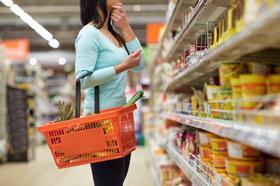
Over half of UK consumers (53 per cent) claim that the cost of their normal weekly grocery shop has risen in the last six months, reveals new insight released today (12 April) by NielsenIQ, in its new Economic Divide study, which identifies five new consumer groups, and how this will shape consumer shopping behaviours in the year ahead as Britain prepares for soaring UK inflation.
The five new consumer groups, identified by NielsenIQ, are based on the pandemic’s economic impact on consumers’ financial security and associated spending patterns and are each shaped by their unique circumstances and approach to endemic living:
● Strugglers: This is 19% of Brits surveyed, these consumers experienced job or income loss and continue to do so today
● Rebounders: Making up 22% of consumers, these shoppers experienced job or income loss during COVID-19, but are back on track now
● Cautious: The most widespread (35%), these consumers did not see an impact on their household’s financial security during COVID-19, but are still cautious with spending habits
● Unchanged: For 16% of Brits, there was no impact on their household's financial security and continued to spend as they normally did
● Thrivers: Making up just 8% of consumers surveyed, they saved money during COVID-19 and feel more financially secure now than they did prior to the pandemic.
These segments demonstrate that 76 per cent of UK consumers overall are cost-conscious consumers who are altering their buying and consumption patterns.
Over half (53 per cent) of all Brits are also noticing the increasing cost of their weekly grocery basket in the last six months, rising to 70% of the consumers identified as strugglers. Although 'thrivers' are the most financially secure, they too have noticed a climb in grocery spend (62 per cent), despite purchasing the same items.
In terms of managing grocery spend amid rising costs, 16 per cent of all UK consumers have taken a radical approach and stopped buying certain products completely. The biggest consumer group to make such changes is the strugglers (21 per cent), slightly below the global total for this consumer group (23 per cent).
According to data from NielsenIQ, 21 per cent of all UK shoppers select the lowest priced product irrespective of brand, with this figure climbing to 27 per cent for strugglers. Meanwhile, thrivers are the least likely to make this choice, with 13 per cent saying they choose to stick to their preferred brand (13 per cent) irrespective of price.
In an interesting shift, NielsenIQ data shows that thrivers are the most likely to buy whatever brand is on promotion (21 per cent) followed by the cautious (19 per cent). Thrivers are also more inclined (19 per cent) to wait until their preferred products are on promotion to buy, just behind the strugglers (20 per cent).
In line with the global total (69 per cent), in-store grocery shopping at a hypermarket or supermarket remains the preferred method for UK consumers (61 per cent), rising to 66 per cent across the cautious, unchanged and thriver groups.
However, when it comes to ordering online, this is most popular among the strugglers, with a combined total of 84 per cent either ordering groceries online for delivery or pick-up at either a supermarket, local traditional store or from a pure-player like Amazon. This is above the global total (83 per cent) as well as the overall UK total figure (66 per cent).
Rachel White, managing director, NielsenIQ UK and Ireland, said: “The last two years have seen an unprecedented level of uncertainty for consumers and the war in the Ukraine has only exacerbated sentiment about rising cost of living and inflation. In order to adapt to how consumers are reacting, retailers and manufacturers will need to forge new strategies and reinvent portfolios as they navigate these changing needs and priorities of a divided consumer landscape.”



